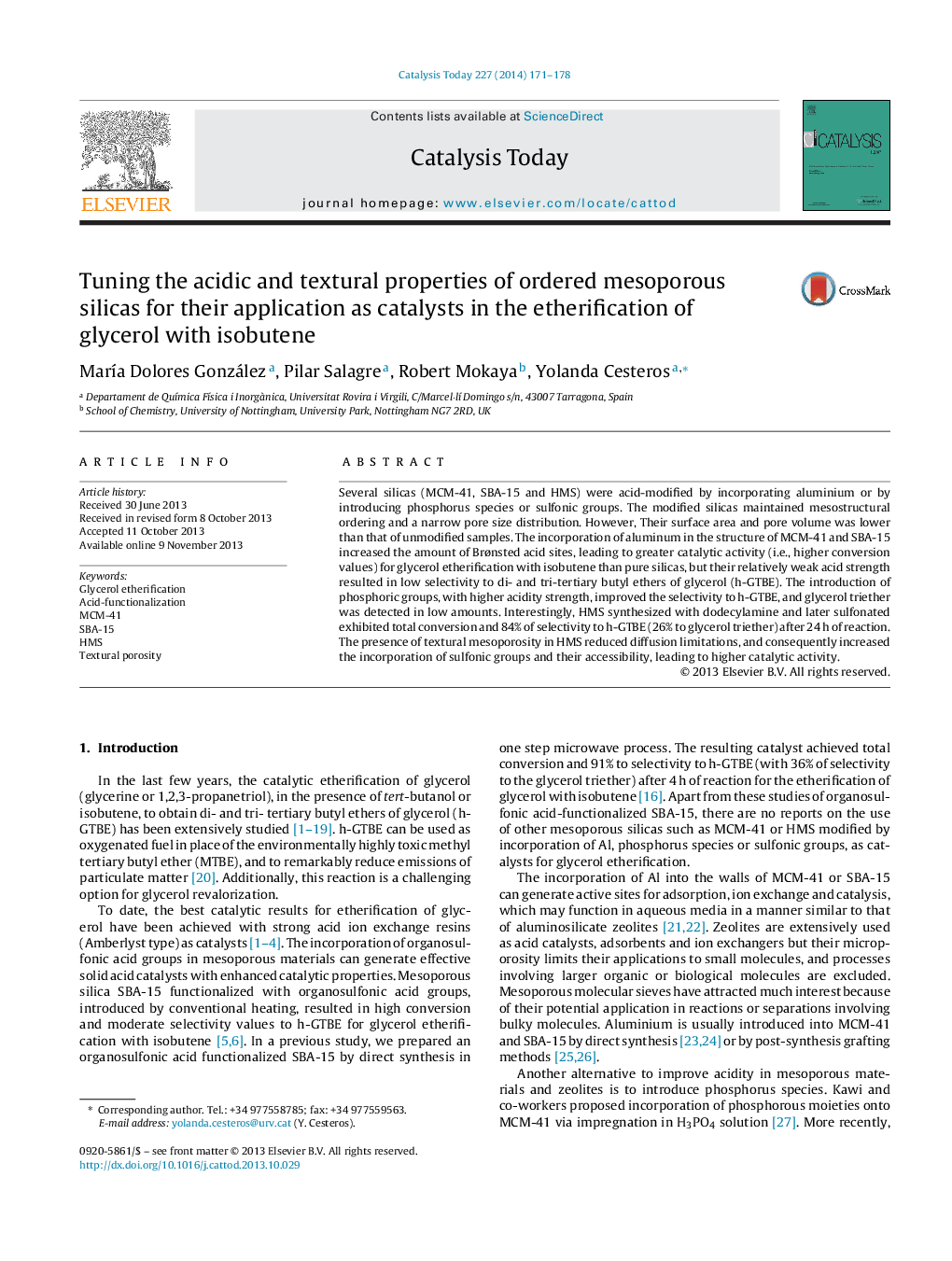| کد مقاله | کد نشریه | سال انتشار | مقاله انگلیسی | نسخه تمام متن |
|---|---|---|---|---|
| 54173 | 46999 | 2014 | 8 صفحه PDF | دانلود رایگان |
• Incorporation of Al in silicas led to low selectivity to h-GTBE due to their low acidity strength.
• Introduction of phosphoric groups, with higher acidity strength, increased h-GTBE.
• The amount of textural porosity in HMS depends on the surfactant used.
• Textural porosity allowed the incorporation of higher amounts of sulfonic groups in HMS.
• Sulfonated HMS(dda) resulted in total conversion and 84% selectivity to h-GTBE.
Several silicas (MCM-41, SBA-15 and HMS) were acid-modified by incorporating aluminium or by introducing phosphorus species or sulfonic groups. The modified silicas maintained mesostructural ordering and a narrow pore size distribution. However, Their surface area and pore volume was lower than that of unmodified samples. The incorporation of aluminum in the structure of MCM-41 and SBA-15 increased the amount of Brønsted acid sites, leading to greater catalytic activity (i.e., higher conversion values) for glycerol etherification with isobutene than pure silicas, but their relatively weak acid strength resulted in low selectivity to di- and tri-tertiary butyl ethers of glycerol (h-GTBE). The introduction of phosphoric groups, with higher acidity strength, improved the selectivity to h-GTBE, and glycerol triether was detected in low amounts. Interestingly, HMS synthesized with dodecylamine and later sulfonated exhibited total conversion and 84% of selectivity to h-GTBE (26% to glycerol triether) after 24 h of reaction. The presence of textural mesoporosity in HMS reduced diffusion limitations, and consequently increased the incorporation of sulfonic groups and their accessibility, leading to higher catalytic activity.
Figure optionsDownload high-quality image (208 K)Download as PowerPoint slide
Journal: Catalysis Today - Volume 227, 15 May 2014, Pages 171–178
